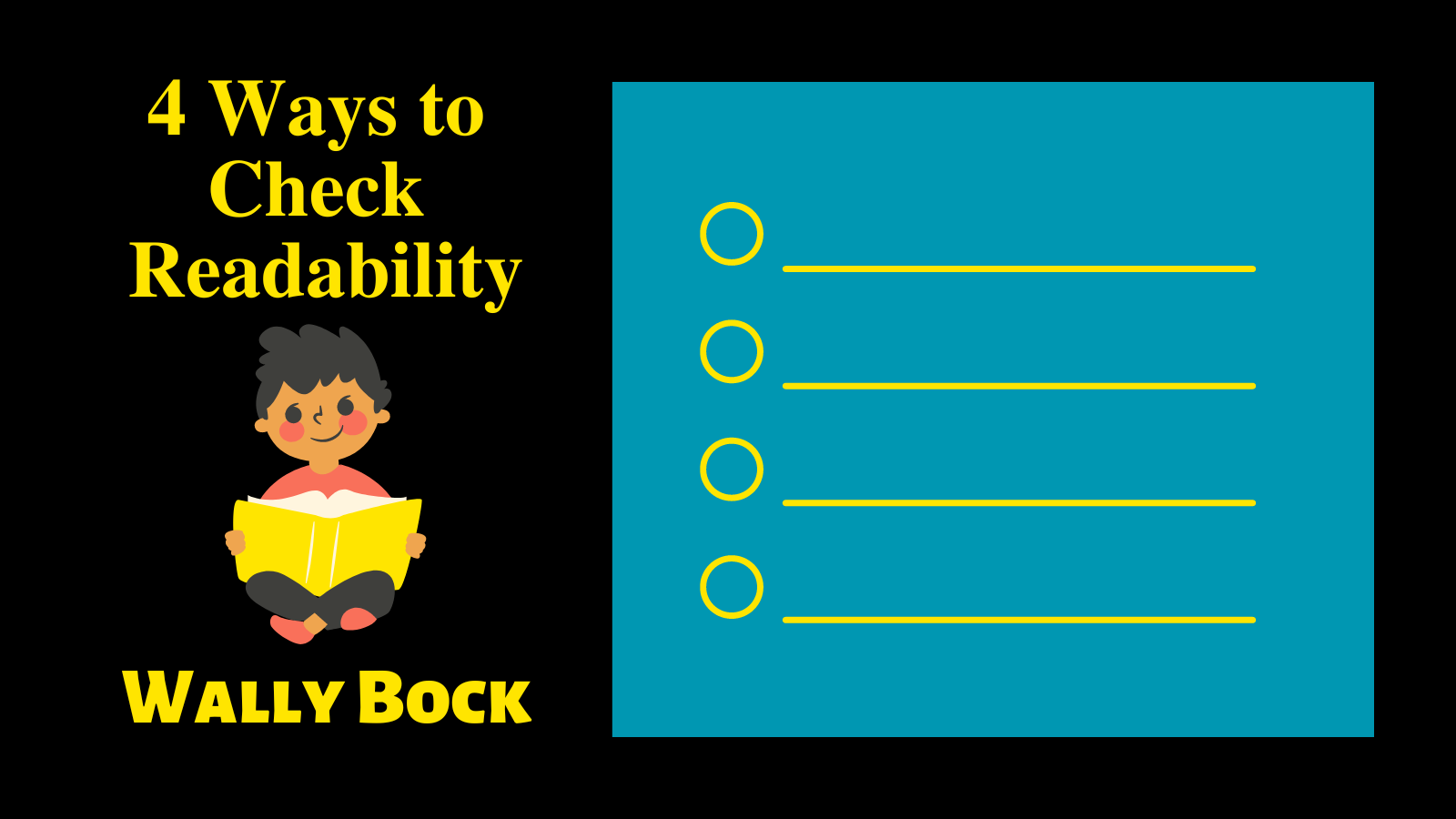It’s human nature. We prefer easy to hard. When it comes to reading, we’re more likely to keep going when the reading is easy. We’re more likely to give up and go on to something else when the reading is hard.
Alas, too many writers make it hard for the reader. Maybe they’re trying to prove they’re smart. Maybe all they know is the academic writing model. It doesn’t matter. If you want to be read, you’ll do better if you make it easy for people to read.
The question is, how do you know how difficult your writing is to read. Smart people have been working on ways to measure readability for more than 70 years. And today, technology has automated much of the process. Here are four ways you can go about checking the readability of what you write.
Use a formula.
Formulas for measuring readability have been around since at least 1952. That was when Robert Gunning created his Fog Index. It measured readability based on the number of complex words and average sentence length. Today, there are two other formulas that are more popular with writers in general. It turns out that both of them are connected to one man.
The man was Doctor Rudolf Flesch. He was the author of books like The Art of Plain Talk and The Art of Readable Writing. He created the Automated Readability Index (ARI) in 1968. It uses average sentence length and the average number of characters per word to determine the grade level of a piece of writing. Grade level refers to the lowest level of education a reader needs to understand the piece.
In the 1970s, he teamed up with J. Peter Kincaid who was creating standardized tests for the Educational Testing Service. They created the Flesch-Kincaid Grade Level Formula that uses average sentence length and the average number of syllables per word to determine grade level.
Once you’ve decided to work with the formula, you can use it as a guide to the changes you should make in your writing. Doing the arithmetic and counting up the syllables, though, is no easy thing. Fortunately, you don’t have to do that anymore.
Use a grammar checker that rates readability.
The good news is that readability calculations are available as part of several grammar checkers. Now, it takes a couple of clicks and no arithmetic to determine the grade level of your writing.
Microsoft Word has a built-in grammar checker that uses the Flesh-Kincaid formula. Grammarly uses Flesh-Kincaid, too. ProWritingAid uses a proprietary formula and Hemingway uses ARI. These programs will not only determine the grade level of your writing but also make suggestions about how to improve it. In my experience, the different programs produce similar grade-level ratings for the same piece of writing. Where they differ is in recommendations for improvement.
Use more than one at a time.
The English language is a wonderful thing. It’s far too complex and flexible to follow a preprogrammed set of rules, no matter how extensive. Different grammar checkers will give you different takes on the same piece of writing. That can be a good thing.
Use more than one program to evaluate a piece of writing. You’ll find that each program catches things the other doesn’t. That’s good. It’s not perfect, though, you still need to know your grammar and usage because you have the final say on whether and how to change anything.
The combination I like best is Grammarly and Hemingway. That’s a preference, not a rating. I think that Grammarly does the best job of catching the kinds of mistakes I’m likely to make. I like the fact that Hemingway highlights things that should be changed and indicates the ones that are hardest to read.
Read your work aloud.
So far, we’ve been talking about formulas and programs. Now it’s time for the human factor.
Whatever kind of readability checking or grammar checking you do; you’ll write better if you read your writing aloud. Your mouth will trip over things that your eyes thought were just fine. Extra credit if you let your writing rest for a day or more before reading it aloud.
Takeaways
Readers are more likely to keep reading if the reading is easy.
There are several reliable ways to estimate readability.
Readability formulas have been around for more than 70 years.
Today there are automated ways to check readability.
Use a grammar checker that also rates readability.
Use two or more grammar checkers in combination.
Read your work aloud.
